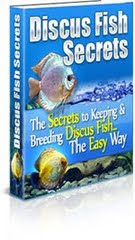
Before you do this, you will need to learn about the habits pattern of these exciting and exotic creatures. Before breeding, discus likes to choose their own partner, which makes breeding a little bit difficult and lot more expensive for the owner. Discus shouldn't be kept in groups of not more than maximum of four ideally. The water should kept warm enough and they should be feed properly and with time you will see that breeding discus will be a true joy. And it won't take too long before they spawn.To have a better understanding of how to breeding discus you have a lot of reading to do.
Discus will choose vertical site for their mating and will clean it up before laying eggs. If the water are good and they are well fed they will spawn on the bottom or the side of the tank. After the laying of the eggs and fertilizing them, both parents will be guarding the vicinity preventing other fish from coming close. While breeding discus, you will also notice behavior changes in your normally so calm and shy fish. They will not be aggressive to other tank inhabitants unless their eggs are in danger. It is not uncommon for the parents to eat the eggs. Even sometimes, parents fish will eat the eggs to protect them from vulnerability.
It's quite easy to know if you've got discus fish pairs; you will see two of them starting to defend a parameter in the aquarium, you will need to act fast. It would be an ideal time for the owner of discus fish to separate them into a different tank setup. They will only need a vertical surface to deposit their eggs. To further improve the environment of the breeding discus you can add a small bag of peat moss in the power filter, thus recreating the natural water environment of the discus.
Water and food are the two essential elements for successful discus breeding. Practical information will come handy especially when you haven't been breeding discus fish before; so, enjoy the experience and bear in mind that the well-being of healthy tropical fish is your responsibility from the start to the end. Have fun and good luck!
Article Source: http://EzineArticles.com/?expert=Pius_Ephenus









